 Football fans up and down the country are used to shouting ‘handball’ any time the ball goes anywhere near the top half of an opposing player, but they’re referring to a breaking of the rules of the game rather than this team sport that has been part of the Summer Olympic Games roster since 1972.
Football fans up and down the country are used to shouting ‘handball’ any time the ball goes anywhere near the top half of an opposing player, but they’re referring to a breaking of the rules of the game rather than this team sport that has been part of the Summer Olympic Games roster since 1972.
Played on a court measuring 40 metres by 20 metres and featuring teams of 7 players on each side, handball is normally played indoors but can take place outdoors with certain tweaks to the rules.
The teams are made up of 1 goalkeeper and 6 outfield players, with the goals themselves surrounded by an area measuring 6 metres that only the goalkeeper is allowed to touch the ball. That means that goals need to be scored from outside that exclusion zone, though a player can dive into it in order to throw the ball into the back of the net.
Evidence suggests that the Romans played a sport similar to handball, but in practice the rules of the game were laid down in 1917 and have been revised a few times since.
Best Handball Bookmaker
Bet365

For the biggest market choice, best general prices, largest in-play selections and most professional betting experience for Hanball; there is no beating Bet365.
The bookies covers all major events, and some minor ones too and are one of the best for live stats, results, and anything else pretty much you need to bet on the sport.
Handball is covered fairly widely and if you are looking for other options to compare odds with consider any of the bigger companies as these are the ones that have enough odds traders to price these events.
How To Bet On Handball
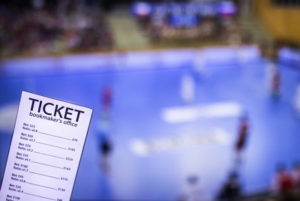 One thing worth bearing in mind with handball is that scoring tends to happen in bursts, with teams concentrating either on attacking or defending.
One thing worth bearing in mind with handball is that scoring tends to happen in bursts, with teams concentrating either on attacking or defending.
That makes it different from the likes of football that is more end-to-end. That could be important if you’re looking at in-play betting, for example, as teams often attempt to build up a lead and then defend it. Seeing a side 5-0 up doesn’t automatically mean that they’re definitely going to win, for example.
When it comes to what to bet on you’ll fine the markets fairly similar to any other major sport. The most popular ones are as follows:
- Match Betting – Will the home team or the away side win? That’s what you’re betting on here. Because draws don’t usually happen in handball most bookmakers don’t offer the market
- Totals Betting – Here you can bet on whether the number of goals scored in total will be over or under a number chosen by your bookie. Usually you can choose whether you want to bet on a specific half or the match overall
- Outright Markets – This sort of bet is on the team that will win a tournament or group
- Handicap Betting – As with any other sport, you can choose to give your chosen team an advantage or a handicap to overcome. This sort of betting is usually done to lengthen the market
The History Of Handball
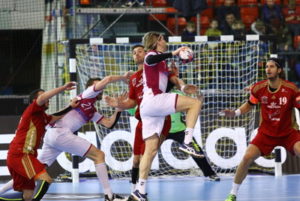 Did the Romans play handball? There’s evidence to suggest that a game called expulsim ludere was played by Roman females and was similar in nature to handball.
Did the Romans play handball? There’s evidence to suggest that a game called expulsim ludere was played by Roman females and was similar in nature to handball.
Similarly games using hand and ball were played in medieval France, by Inuits in Greenland during the Middle Ages and across Europe in the 19th century. Those games were the likes of Handbol in Ukraine, házená in the Czech Republic, torball in Germany and håndbold in Denmark.
Regardless of its exact origins, what we can tell you is that by the end of the 19th century it was being played with a large degree of regularity across Europe, particularly in Germany and the Nordic countries. Believe it or not it was actually a gym teacher in Denmark that wrote the rules down for the first time, with Holger Nielsen doing so in 1906.
That does undersell his accomplishments somewhat, though, given that he won 2 bronze medals in Sabre and 25-metre Rapid Fire Pistol Shooting at the 1896 Athens Olympics, as well as a silver medal in the Free Pistol discipline the same year.
The Official Rules Are Codified
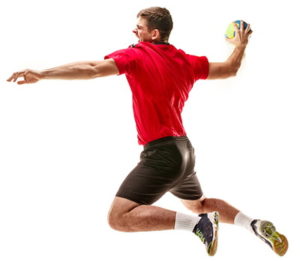 Three Germans named Karl Schelenz, Max Heiser and Erich Konigh are responsible for the official rules of the modern game being written on the 29th of October 1917, with the rules being improved by Schelenz in 1919.
Three Germans named Karl Schelenz, Max Heiser and Erich Konigh are responsible for the official rules of the modern game being written on the 29th of October 1917, with the rules being improved by Schelenz in 1919.
When the first international match was played between Germany and Belgium in 1925 it was these rules that were used for the competitive match up. The same rules were used when women from Germany and Austria played the first international match 5 years later.
The sport’s development after the codification of the rules was quite rapid, with the International Amateur Athletics Federation nominating a committee to create the official international rules in 1926. This in turn led to the creation of the The International Amateur Handball Federation 2 year later, whilst the non-amateur International Handball Federation came about in 1946.
The Olympics And Beyond
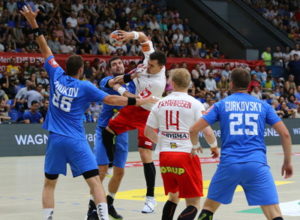 In 1936 the men’s variation of handball was played for the first time at the Berlin Summer Olympic Games, though it’s worth noting that this was outdoor handball and the rules were different from the game we know today.
In 1936 the men’s variation of handball was played for the first time at the Berlin Summer Olympic Games, though it’s worth noting that this was outdoor handball and the rules were different from the game we know today.
Germany won the gold medal, with Austria taking silver and Switzerland the bronze. Whilst it would be unfair to suggest that it was a failure, it is noteworthy that handball didn’t appear on the Olympic Games roster again until the 1972 Olympics in Munich.
The sport has been played by women pretty much since its invention, but its presence in major tournaments such as the Olympics has been limited to male teams. Women’s team handball didn’t get added to the program until its 1976 outing in Montreal.
This is reflected in the fact that the International Handball Federation organised a men’s championship from 1938, whilst the women’s game didn’t get a world championship until 1955. The men’s took place mostly every 4 years, though sometimes every 3, until 1995 when it was moved to Iceland and occurs every 2 years.
The Rules Of Handball
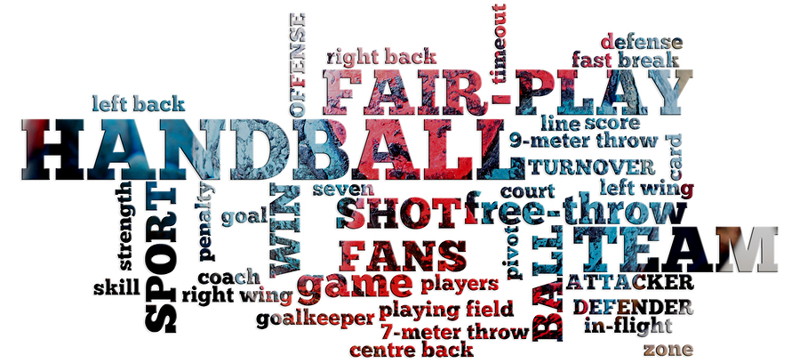
As with many other team sports involving a ball, the aim of handball is to outscore your opposing team. Points are awarded by putting the ball into the opposition’s net, with each goal being worth 1 as in association football.
Matches last for 2 halves of 30 minutes per half, with a 10 to 15 minute break between the halves. The length of each half is determined by the age group of the participants, but for the sake of clarity we’ll just look at the senior game here.
If a match requires a decision at the end of it but is a draw when the time is up then an additional 10 minutes can be played, which is made up of 2 5 minute periods. If that doesn’t decide anything then a penalty shout-out can come into play, which is best of 5 leading into sudden death if the result remains undecided. Teams can call up to 3 time-outs per game, up to 2 per half, and they last for 1 minute each.
Teams are made up of 7 players on the pitch and 7 substitutes, with substitutions allowed to occur at any moment and for any number of players as long as they cross over the substitution line.
The ball used in the game is spherical and has specific measurements in play depending on whether it’s the men’s or women’s game. Here are those measurements:
| Gender of Participants | Circumference in Centimetres | Weight in Grams |
|---|---|---|
| Male | 58 to 60 | 425 to 475 |
| Female | 54 to 56 | 325 to 375 |
It is made either of leather or synthetic material and can’t be shiny or slippery. There are restrictions in place for the players, which are as follows:
- A player must either pass, shoot or dribble the ball within 3 seconds of taking possession of it
- Players can take 3 steps before doing one of the above, with dribbling being similar in style to that used in basketball
- Only the defending goalkeeper can touch the floor within 6 metres of the goal. As a result, a shot or pass from within the area is only valid if it’s made before the player touches the floor
- Goalkeepers can leave the area but can’t cross the goal area with the ball in their hands. They’re also not allowed to receive a back-pass when inside the area
The Court
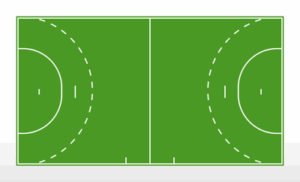 Handball courts are 40 metres by 20 metres and the goals are located in the centre of both ends of the pitch. There is a centre line and the D-Zone, which is made up of 2 quarter circles boasting a radius of 6 metres. If a player other than the ‘keeper touches the floor inside this area with the ball then possession is given over to the other team.
Handball courts are 40 metres by 20 metres and the goals are located in the centre of both ends of the pitch. There is a centre line and the D-Zone, which is made up of 2 quarter circles boasting a radius of 6 metres. If a player other than the ‘keeper touches the floor inside this area with the ball then possession is given over to the other team.
The substitution areas are found along the edge of the playing field and by the middle line. This is where the substitutes are based, as well as the team officials and any players that have been suspended. The two teams swap areas at half-time because the team is always based in the substitution area closest to their goal.
Officials
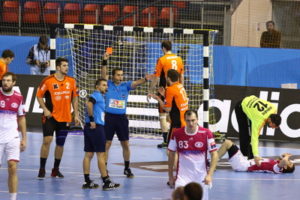 Handball matches have 2 referees who have equal weight in decision making. Typically one is known as the field referee and is based on one side of the pitch whilst the other is the goal referee and is located on the other.
Handball matches have 2 referees who have equal weight in decision making. Typically one is known as the field referee and is based on one side of the pitch whilst the other is the goal referee and is located on the other.
They stand diagonally opposite each other and swap over when the ball changes teams. They also physically swap with each other every 10 minutes or so and change sides every 5 minutes. They use 18 hand signals to communicate and whistles to restart play or indicate a rule infraction.
The referees are also supported by a timekeeper and a scorekeeper. Their roles are relatively obvious, keeping track of the time as well as the likes of the score and any suspensions that have been issued by the match referees. They have a desk between the 2 different substitution areas and are also instructed to watch over the substitutions as they occur in case there are any errors.
There are a number of special throws that can be awarded throughout the game by the match officials, which are summed up briefly as follows:
- Throw-Off – This occurs in the centre of the court and the thrower needs to be touching the middle line with one foot. Defending players need to stay 3 metres or more from the thrower until the ball has left their hand, whilst their teammates must remain in the own half
- Throw-In – The team that touched the ball last before it goes out of play cedes possession of it, with the opposition re-starting play by taking a throw-in. Defending players must stand at least 3 metres away
- Goalkeeper-Throw – When the ball goes past the outer goal-line without having been touched by a defending outfield player the goalkeeper re-starts play with a throw from anywhere in their area. This also re-starts play when an opposition player violates the rule about the D-zone.
- Free-Throw – This sort of throw is used to re-start play after the game has been interrupted by a referee
- 7-Metre Throw – If a clear chance of scoring is illegally prevented then a throw is taken by the attacking player from the 7-metre line, with only the goalkeeper to beat
General Play
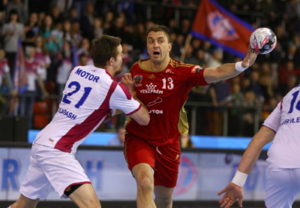 Field players can touch the ball with any body part above and including the knee. If they take more than three steps after receiving possession of the ball then it is travelling and the opposite team will take possession of the ball.
Field players can touch the ball with any body part above and including the knee. If they take more than three steps after receiving possession of the ball then it is travelling and the opposite team will take possession of the ball.
They can dribble as many times as they choose to, but most players opt to pass as it’s the fastest way of moving the ball around the pitch.
Goalkeepers may be substituted for an outfield player, with the player replacing them needing to wear a bib or some other garment that differentiates them from the rest of the team. The rule is similar to the one used in ice hockey and was introduced in December of 2015 for the women’s game and January of the following year for men.
Unlike football, if the goalkeeper touches the ball out of play past their goal-line their team remains in control of it.
Major Handball Tournaments
 In the world of handball, there are countless competitions organised in the most competitive countries. Handball Liga Austria, the Croatian First League of Handball and the Ligue Nationale de Handball in France are all examples of these competitions.
In the world of handball, there are countless competitions organised in the most competitive countries. Handball Liga Austria, the Croatian First League of Handball and the Ligue Nationale de Handball in France are all examples of these competitions.
There are, frankly, too many to mention so instead we’ll look at the major international tournaments. These are:
- The Pan American Championship – Sometimes known as PanAmericano, this is the competition for teams based in North, Central, and South America and the Caribbean. It is a qualifier for the IHF World Men’s Handball Championship
- IHF World Men’s Handball Championship – Taking place since 1938, this is the premier tournament for men’s handball. 24 teams compete and, like the Olympics, gold, silver and bronze medals are awarded
- IHF World Women’s Handball Championship – As you can guess, this is the equivalent competition for the women’s game
- IHF Super Globe – A club competition for the champion clubs from the various continental confederations, 8 teams compete every year
- Handball at the Summer Olympics – Men’s indoor handball has been played at the Summer Olympic Games since 1972, with women’s indoor handball coming into play 4 years later
